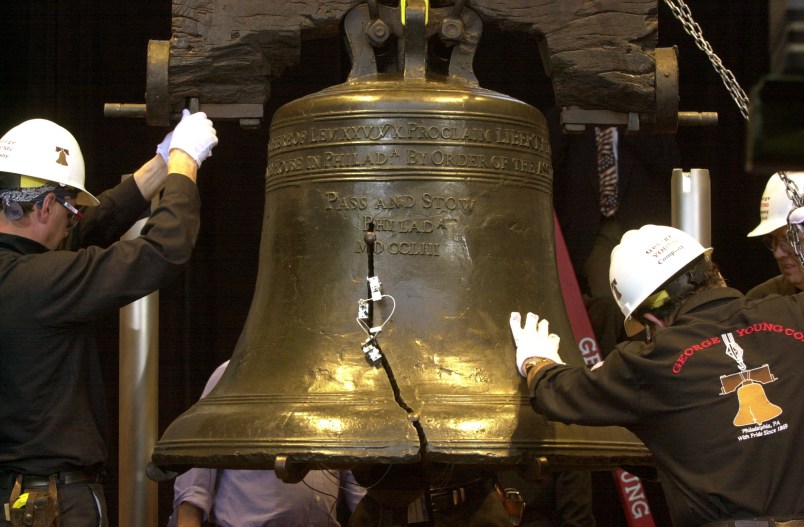Another seldom-discussed consequence of sequestration is beginning to take effect — one which was a defining moment in the 1995-96 government shutdown.
That shutdown required 368 National Parks to be closed, and seven million irate visitors to be turned away. While sequestration won’t entail immediate and complete closure of the parks, its semi-permanent status means that over time more people will be affected, and its snowballing effects will likely frustrate a huge number of spring and summer tourists in similar ways.
At a Tuesday congressional hearing, House Republicans disputed that sequestration-related Park Service cuts should entail any real consequences for visitors, suggesting that closures and operational cuts are designed to provoke a public backlash.
That’s either wishful thinking, or a pre-emptive attempt to deflect constituent anger. Around the country, park staff have been finalizing plans to meet their sequestration requirements. Below are several examples, culled from headlines, suggesting that hundreds of thousands, if not millions of people, will have to rethink their summer travel plans this year — all because of how sequestration parcels out spending cuts.
- “Visitors to the Oregon coast looking forward to the lofty view from the top of the 93-foot Yaquina Head Lighthouse are in for a disappointment,” The Oregonian reports. “A hiring freeze at the U.S. Department of Interior, a result of the budget fight over the sequester cuts in the nation’s capital, has closed the lighthouse to interior tours indefinitely…. The Yaquina Head Outstanding Area sees about 350,000 visitors a year.”
- “A scenic window to North Dakota’s Theodore Roosevelt National Park won’t open in April, or in the foreseeable future,” according to the Bismarck Tribune. “The Painted Canyon Overlook, visited by hundreds of thousands of people in the seven months it’s open every year, will not reopen this spring because of federal budget cuts and there’s no word when it will.”
- “Nighttime hours at places like the Liberty Bell and Independence Hall, various historic sites and Park Ranger-led walking tours are all going away thanks to the federal government’s sequester,” explains NBC Philadelphia. “The budget impasse known as sequestration has cut $1.21 million from the Independence National Historical Park’s budget — prompting the cuts. … In total, about 225,000 visitors will be affected by the cuts. The park also won’t be able to fill 16 job positions and visitors will see cutbacks in park services.”
- “Parks all across the country — including the five national parks in Michigan — are already feeling the pinch, having to curtail everything from visitor center hours to restroom maintenance,” reports The Detroit News. “The cuts come as attendance at Michigan’s national parks is rising. Last year, more than 2 million people visited the parks, up more than 11 percent from 2011.
- “Forced federal budget cuts, called sequestration, are preventing the opening of Scooteney Park near Connell for camping,” according to the Tri-City Herald in inland Washington state. “The day-use area will remain open, but staff is inadequate because of a federal hiring freeze to allow overnight use, according to the Bureau of Reclamation…. Scooteney Park averages about 45,000 visitors a year with nearly 6,000 using the campground. The park sits on about 1,200 acres and has 36 campsites and day-use facilities.”

- At Glacier National Park, pictured above, “visitors will see delayed trail access, less maintenance work on park facilities, and some reduced access to campgrounds and visitor centers during the non-peak season,” reports KTVQ in Billings, MT.
- On Long Island, “Officials plan to keep Sagamore Hill on its winter schedule of closing buildings, but not the grounds, two days a week through the summer instead of opening seven days. The park is also slated to close on federal holidays — including Memorial Day and July Fourth,” explains Newsday. “In the past, the site has held special programs on those days. And most special programs on the Cove Neck property are expected to be canceled, along with all off-site programs including guided tours of downtown Oyster Bay. Fire Island National Seashore plans to reduce hiring, reduce lifeguard use, and close visitor centers two days a week.”
The memorial to victims of Flight 93, which crashed on September 11, 2001, in Pennsylvania will also be impacted.
Rep. Darrell Issa (R-CA), the chairman of the oversight committee probing the park service cuts — and whose own constituents are expecting sequestration-induced furloughs — suggested the cuts might be designed to be more damaging than necessary.
“No one disputes that sequester cuts are real,” Issa said. “The questions and concerns are about whether or not (the Obama) administration is doing everything it can to minimize the impact of the sequester.”
But because sequestration requires each agency to cut each account by the same percentage, Park operations are taking a sizable hit, and each national park must shave about five percent from its budget.










